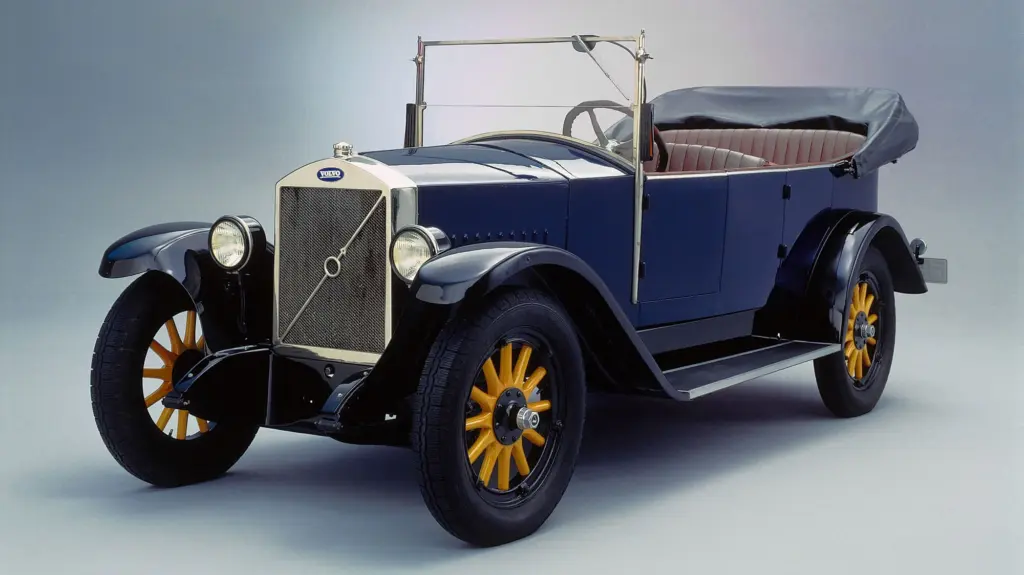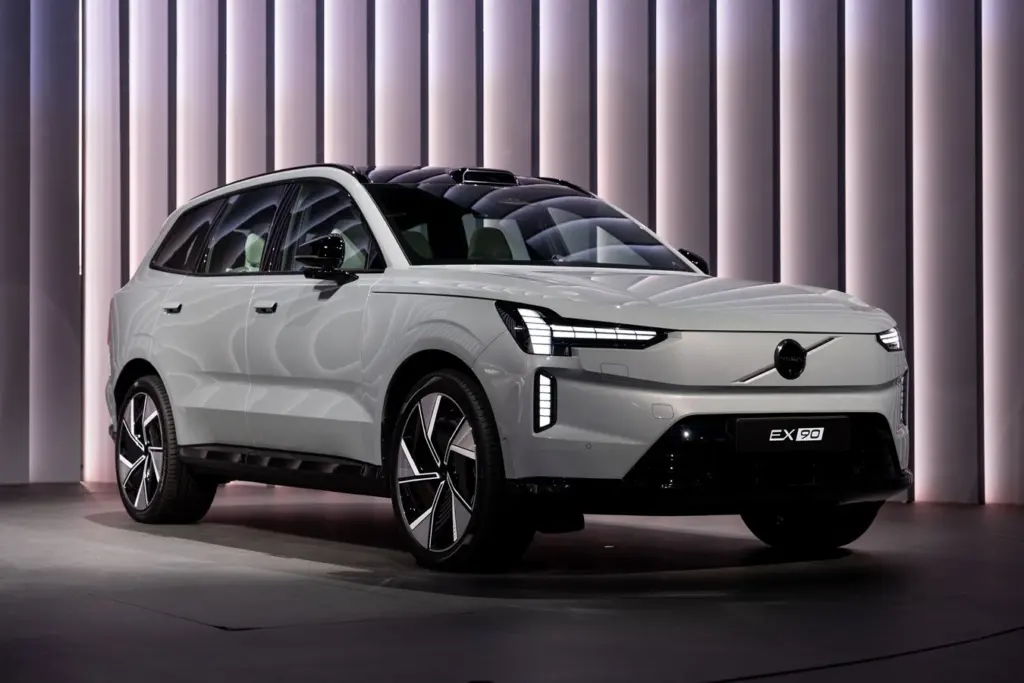Introduction
Volvo has redefined the automotive industry with its commitment to safety, innovation, and sustainability. With a legacy spanning nearly a century, Volvo is now a prominent name in India, appealing to luxury and eco-conscious consumers alike. In this article, we’ll explore Volvo’s rich history, iconic models, its presence in India, and its vision for the future.
Volvo’s Journey: from sweden to India
Founded in 1927 in Gothenburg, Sweden, Volvo began with a mission to create the safest cars in the world. Over the decades, Volvo has revolutionized the automotive industry with groundbreaking innovations.
Key Milestones in Volvo’s History:
- 1959: Volvo introduced the world’s first three-point seat belt.
- 1990s: Expansion into luxury SUVs and sedans.
- 2010: Acquisition by Geely Holding Group, bringing Volvo into a new era of global success.
- 2021: Launch of Volvo’s first fully electric car, the XC40 Recharge, in India.
Volvo’s iconic models: A blend of safety, luxury, and sustainability
- Volvo XC40:
Compact yet luxurious, the XC40 is Volvo’s entry-level SUV that’s popular among Indian buyers seeking a premium experience. - Volvo XC90:
A flagship luxury SUV combining cutting-edge safety features, hybrid technology, and elegant design. - Volvo S60:
This sedan is a perfect mix of sporty aesthetics and advanced technology. - Volvo P1800:
A timeless classic known for its distinctive style and performance. - Volvo V60 Cross Country:
Built for adventure, this model blends practicality with rugged performance.
Volvo in India: expanding horizons
Volvo entered the Indian market with a focus on premium SUVs and sedans. Today, the brand is synonymous with luxury and safety in the Indian automotive space.
Why Volvo is Popular in India:
- Advanced safety features, perfect for Indian road conditions.
- Sustainable initiatives like hybrid and electric models.
- Superior customer service and dealership experience.
Models Assembled in India:
Volvo assembles its key models like the XC60, S90, and XC90 at its Bangalore facility, ensuring they meet local market demands while maintaining global standards.
Volvo’s commitment to sustainability and safety
Volvo’s mission is clear: to be a pioneer in sustainability and safety.
- Sustainability Goals: By 2030, all Volvo cars will be fully electric. The brand is also aiming for carbon neutrality by 2040.
- Safety Leadership: Volvo remains a leader in safety with features like Pilot Assist, 360-degree cameras, and collision avoidance systems.
In India, Volvo’s electric vehicles, like the XC40 Recharge, have been well-received, aligning with the government’s push for EV adoption.
Why Volvo stands out in India
- Unparalleled Safety: Every Volvo car is engineered with state-of-the-art safety technology.
- Luxury Meets Functionality: Volvo blends Scandinavian design with practicality, offering comfort and style for Indian consumers.
- Green Future: Volvo’s range of electric and hybrid vehicles makes it a pioneer in India’s sustainable mobility revolution.
The Volvo ÖV4: The car that started it all (1927)
The Volvo ÖV4, affectionately nicknamed «Jakob,» was the first car ever produced by Volvo. This open-top vehicle was launched on April 14, 1927, in Gothenburg, Sweden. The ÖV4 laid the foundation for Volvo’s reputation as a manufacturer of durable and reliable vehicles.
Key Specifications of the Volvo ÖV4:
- Engine: A 1.9-liter, 4-cylinder side-valve engine that produced 28 horsepower.
- Transmission: 3-speed manual transmission.
- Top Speed: Approximately 90 km/h (56 mph).
- Range/Autonomy: Limited by early fuel efficiencies, it could travel 300-400 kilometers on a single tank.
- Body Style: Open touring car with a steel-reinforced wooden frame.
- Seating Capacity: Designed for four passengers.
- Price at Launch: 4,800 SEK (Swedish Kronor), equivalent to about $1,000 USD at the time.
The ÖV4’s design prioritized durability for Sweden’s rugged terrain, with a strong chassis and solid axles. Although the open-top design faced criticism in Sweden’s harsh winters, it represented a bold start for Volvo.

The Volvo EX90: The future of automotive innovation (2023)
Fast forward to the present, and Volvo’s latest model, the EX90, represents the brand’s vision for sustainability and advanced technology. This fully electric SUV combines luxury, safety, and cutting-edge design, embodying Volvo’s commitment to a carbon-neutral future.
Key specifications of the Volvo EX90:
- Engine: Dual electric motors delivering up to 517 horsepower and 910 Nm of torque.
- Battery: 111 kWh lithium-ion battery.
- Range/Autonomy: An impressive up to 600 kilometers on a single charge (WLTP cycle).
- Charging: Fast-charging capability (10% to 80% in just 30 minutes with a 250 kW charger).
- Top Speed: Limited to 180 km/h (112 mph) for safety reasons.
- Interior: Sustainable materials like wool-blend textiles and recycled plastics.
- Technology: Equipped with Volvo’s latest LiDAR technology for advanced autonomous driving.
- Price: Starting at $80,000 USD (varies by market).
Why the EX90 stands out:
- Sustainability: Made with 15% recycled steel, 25% recycled aluminum, and 48 kg of recycled plastics.
- Safety: Features like driver monitoring systems, collision avoidance, and Pilot Assist set new standards.
- Luxury: Panoramic glass roof, ambient lighting, and a state-of-the-art infotainment system with Google built-in.
The EX90 reflects Volvo’s promise to make all its cars fully electric by 2030 and carbon-neutral by 2040.
Comparing the ÖV4 and EX90: a century of innovation
| Feature | Volvo ÖV4 (1927) | Volvo EX90 (2023) |
|---|---|---|
| Engine | 1.9L, 4-cylinder (28 HP) | Dual electric motors (517 HP) |
| Top Speed | 90 km/h (56 mph) | 180 km/h (112 mph) |
| Range | ~300-400 km (gasoline) | Up to 600 km (electric) |
| Body | Steel-reinforced wood | Sustainable aluminum and steel |
| Technology | Basic gauges | Advanced LiDAR and AI systems |
| Price | ~4,800 SEK | ~$80,000 USD |
The contrast between these models underscores Volvo’s remarkable progress, transforming from a rugged, practical carmaker into a leader in luxury, technology, and sustainability.
Volvo’s vision for the future
Volvo is not just a car manufacturer; it’s a brand shaping the future of mobility.
- Electric Expansion: Volvo aims to dominate the Indian EV market with a range of luxury electric cars by 2030.
- Autonomous Driving: Volvo is actively developing self-driving technology to enhance safety and convenience.
- Strengthening India’s Market Presence: Volvo plans to expand its dealership network and service centers across India, ensuring accessibility for every customer.

Conclusion: Why Volvo is the ultimate automotive choice in India
Volvo’s unparalleled commitment to safety, innovation, and sustainability makes it a standout brand in India. From iconic models like the XC90 to its electric future, Volvo is shaping the Indian automotive market with luxury and reliability. For Indian buyers seeking cutting-edge technology and eco-friendly solutions, Volvo is the perfect choice.


Deja una respuesta